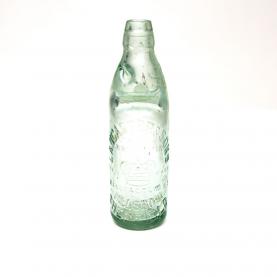Water
Water is essential to human, animal and plant life. Although it is in plentiful supply on Earth, only a limited amount is drinkable and usable by humans. Following a natural cycle, the water in the hydrosphere (oceans, lakes, rivers) evaporates in the air, condenses to form clouds and then falls again when the air is saturated with water. Once it has percolated through the ground, it continues its underground journey, picking up mineral salts and trace elements along the way, elements which are essential for our bodies.
A vital role in human life
Water is essential to human, animal and plant life. It is necessary for cooking, drinking and washing and is also used in food production. Furthermore, it plays a key role in industry and transportation (maritime and waterways). It is also used as a source of power (thermal, hydroelectric) and is indispensable to many leisure activities (water sports).
Agriculture is the most water-intensive human activity worldwide (representing 69% of all water consumed, versus 19% for industry and 12% for populations, UNFAO/FAO, 2015). However, water is unevenly distributed on Earth, where only a limited amount is drinkable and usable without prior treatment. Countries in arid areas with little infrastructure are often the most affected by water shortages. Moreover, climate change and demographic growth are increasing our need for water and exacerbating competition between water users. As such, water is at the centre of global geopolitical issues and, just as petrol is referred to as ‘black gold’, water is now nicknamed ‘blue gold’.
From sea to Earth via the sky
For 4 billion years, water has been following a natural cycle, going through three different states: gaseous (water vapour invisible to the naked eye), liquid (ocean, lake, river, cloud, rain, fog) and solid (ice, ice floe, hail). The sun is the engine that drives this cycle. The sun’s thermal energy keeps the water cycle going. The sun causes water to evaporate into the atmosphere then, in cold air, the water in the atmosphere condenses, forming water droplets and gradually clouds. When the air is saturated with these droplets, the water falls back down in the form of rain or snow. It solidifies and turns into ice when temperatures drop below zero degrees Celsius.
Natural or artificial mineral water, from the spring or the tap
Shops in Switzerland offer consumers the choice of three types of bottled water: natural mineral water, artificial mineral water and spring water. As defined by Swiss law, natural mineral water is characterised by its original purity (it cannot undergo any chemical processing) and by its stable levels of mineral salts and trace elements which depend on its geological origin. Minerals (calcium, magnesium, sodium, potassium, bicarbonates) and trace elements (fluoride, selenium, silicon) play an essential role in forming body tissues and in keeping the organism in working order. These qualities can also include therapeutic properties. Unlike natural mineral water, artificial mineral water is drinking water with natural mineral water added or that has been enriched with mineral salts. Spring water, on the other hand, does not have to contain a minimum quantity of mineral salts or trace elements. Tap water, supplied to populated areas via a distribution network, can come from various sources. In Switzerland, 80% of tap water comes from underground water (half from springs and half from wells) and 20% from surface water (lakes in particular).
AGENCE DE L'EAU SEINE-NORMANDIE, 2015. Les enjeux de l’eau dans le monde. Agence de l'eau Seine-Normandie [en ligne]. [Consulté le 8 décembre 2015]. Disponible à l’adresse : http://www.eau-seine-normandie.fr
Agence nationale de sécurité sanitaire de l’alimentation, de l’environnement et du travail (ANSES), 2015. Les minéraux et oligoéléments. ANSES [en ligne]. [Consulté le 8 décembre 2015]. Disponible à l’adresse : https://www.anses.fr
CENTRE NATIONAL DE RECHERCHE SCIENTIFIQUE (CNRS). Dossier scientifique : l’eau. [en ligne] [Consulté le 3 septembre 2015]. Disponible à l’adresse : http://www.cnrs.fr
COMMISSION SUISSE D’HYDROLOGIE, 2013. L’eau en Suisse. Un aperçu. Berne : Institut de Géographie de l’Université de Berne.
D'ERM, Pascale, 2003. Les eaux minérales. Paris : Broché.
DEPARTEMENT FEDERAL DE L'INTERIEUR (DFI) 2015. Ordonnance du DFI sur l'eau potable sur l'eau de source et l'eau minérale. DFI [en ligne]. [Consulté le 8 décembre 2015]. Disponible à l’adresse : https://www.admin.ch
ESPACE DES SCIENCES, D.d. Cycle de l’eau. Espace des sciences [en ligne] [Consulté le 3 septembre 2015]. Disponible à l’adresse : http://www.espace-sciences.org
ORGANISATION DES NATIONS UNIES POUR L’ALIMENTATION ET L’AGRICULTURE (ONUAA), 2015. L’eau, enjeu pour la sécurité alimentaire mondiale. ONUAA [en ligne]. [Consulté le 8 décembre 2015]. Disponible à l’adresse : http://www.fao.org
ORGANISATION DES NATIONS UNIES POUR L’ALIMENTATION ET L’AGRICULTURE (ONUAA), 2015. Usage de l’eau. ONUAA [en ligne]. [Consulté le 8 décembre 2015]. Disponible à l’adresse : http://www.fao.org
FERNANDEZ, Sara, VERDIER, Jean, 2004. Problématique de l’eau agricole en Méditerranée. Montpellier : Programme international pour le développement des capacités dans le domaine de la gestion de l’eau agricole (IPTRIS) [en ligne]. [Consulté le 8 décembre 2015]. Disponible à l’adresse : ftp://ftp.fao.org
MERCIER, Jacques, 2000. Le grand livre de l’eau. Tournai : La Renaissance du Livre.
SOCIETE SUISSE DE NUTRITION, S. d. Sels minéraux. Société suisse de nutrition [en ligne]. [Consulté le 8 décembre 2015]. Disponible à l’adresse : http://www.sge-ssn.ch






